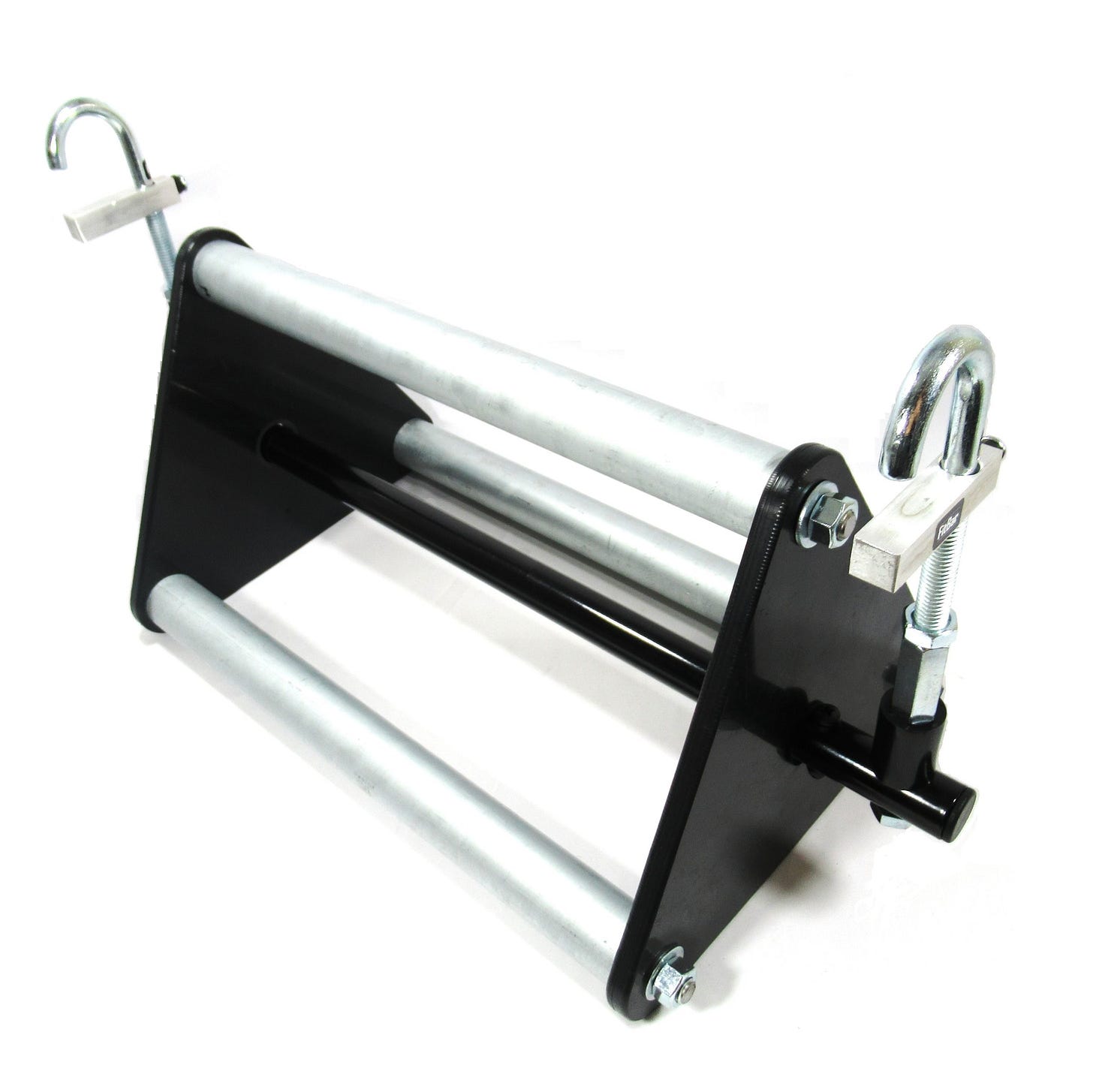The Base Fitness Test
Spartan Beast Prep (Ep 1)
Hey everyone and welcome to another running article!
First of all, if you are new, welcome! Make sure you are subscribed and you can get these letters straight in your inbox!
Welcome to the brand new Spartan Beast series!
If you missed last week’s article, I’ll catch you up real quick. I am going to run a Spartan Beast in Cincinnati this June.
This race will have 3,000ft of total elevation gain on a trail half marathon with 25 obstacles. Those obstacles will be a lot of hanging based obstacles, heavy carries, and more.
As such, having good trail and incline race endurance will be key. But also having stellar grip strength and upper body endurance will be just as important.
The interesting thing will be that every strength based obstacle will be done under durress. This is the opposite of typical gym strength sessions where we rest and get our heart rate low and then pump out a few more reps.
It also means that after these obstacles I need to get right back to running at a fast pace.
The trendy keyword here is: compromised…
The running will be compromised, steep, and on a totally different terrain than the Asheville Marathon
The obstacles will also be from a compromised position as I’ll be tired from running and have no time for rest
Since this is a different type of race, it requires a totally different type of training.
Again, last article I mentioned that because of this I would be putting AI to the ultimate test and see if it can design me a plan to earn a top 10 spot in this Spartan Beast!
While that top 10 spot will be the perfect test for AI, the nerd in me couldn’t pass up an opportunity for an extra control in this experiment.
So, today I want to bring you through the Base Fitness Test!
Base Fitness Test
As with all good experiments, I want to have a good control test for my overall fitness before I start this AI training plan, and then I’ll repeat the same test after I finish the Spartan race.
Since the AI training plan is going to focus on running endurance AND strength, I figured I should test both.
After a lot of contemplation (prompting ChatGPT) I came up with a good list:
Endurance:
1 Mile Time Trial
Celo Knob Ascent
Strength:
Max Dead Hang
Max Pull-ups
Max Push-ups in 2 Minutes
Max Monkey Bars in 2 Minutes
Why These Excercises?
Endurance
For the endurance side of things, I am mainly testing 2 components: high end speed and climbing endurance.
Since I’m training for a trail race with a lot of incline, I will be training on a lot of trails with a lot of incline.
This inevitably means my paces will be way slower than when I train on flat pavement. In fact Garmin is already saying my V02Max is way lower than it was a month ago because of that.
However, in theory, my lactate threshold and V02Max should actually increase because even though it’s a slower pace, I’ll be at an elevated heart rate because of the incline. In fact, my heart rate will be much higher than the majority of my marathon training.
That’s where the 1 mile test comes in. I’m curious if this kind of training will improve my 1 mile time, or potentially slow it down. I’ll still have one track session a week to tap those paces, but definitely not like in marathon training.
So that will be interesting.
Celo Knob is the mountain I’ve chosen to train on. It is on the Black Mountain Crest Trail. It is actually the first peak you get to on this trail. If you keep going past Celo Knob you will eventually get to Mt. Mitchell, the tallest mountain on the East Coast.
Celo Knob is about a 4.3 mile run where you climb about 3,200ft. That’s the same elevation gain as the race, but in a 3rd of the distance.
So it’s pretty steep.
As such, that’s where most of my training runs will take place.
So testing my before and after speed for climbing Celo Knob just makes a lot of sense!
Strength
Since a majority of the obstacles are hanging based, I figured the dead hang, pull-ups, and the monkey bars would be the perfect test for grip strength, shoulder mobility, and pulling strength.
The pushups are just an added benefit to see if my upper body endurance can improve.
In other words, there is a difference between being able to push a heavy weight once and being able to push a lighter weight for a long time. Just like with running. There is a skill in being able to run fast, but that skill is different than being able to run far.
Max pushups in 2 minutes tests if I can build upper body endurance, which is a key skill needed for performing these obstacles under duress.
The Rules
Since this is a controlled experiment, we need some rules in place.
First, for the endurance side, I will not do these runs on the same day. I’ll try and do them pretty rested too. So probably a few days apart.
The Celo Knob ascent will start at the base and go up to the peak, I will turn the run on and leave it going until I get to the top. So any breaks, walking, etc will all be part of the final time.
On the strength side, I am a little more regimented. I will be doing all these exercises on the same day and in the same session. As such, we need a little structure to take into account building up fatigue.
As such, we will do the exercises in this exact order:
Max Dead Hang
Max Pull-ups
Max Push-ups in 2 Minutes
Max Monkey Bars in 1 Minute
After each exercise I will rest for 3 minutes and then immediately move onto the next exercise.
As an aside, the monkey bar test will be using this beater bar obstacle:
Think of it like a monkey bar treadmill :)
The Results are In!
Ok, ok, I’ll get on with it.
The moment you all are waiting for!
The official results for the base test:
1 Mile Time Trial: 5:53
Celo Knob Ascent: 1 hour 15 minutes
Max Dead Hang: 1 minute 15 seconds
Max Pull-Ups: 16
Max Push-Ups: 102 in 2 minutes
Max Monkey Bars: 13 rungs in 1 minute
Those are the times and numbers to beat. Now the training begins!
If you want to follow along, I will be documenting this whole experiment on this newsletter as well as YouTube! The YouTube channel is where you can see me actually perform the base test! So make sure you are subscribed!
As always, thanks for reading, and run with joy!









